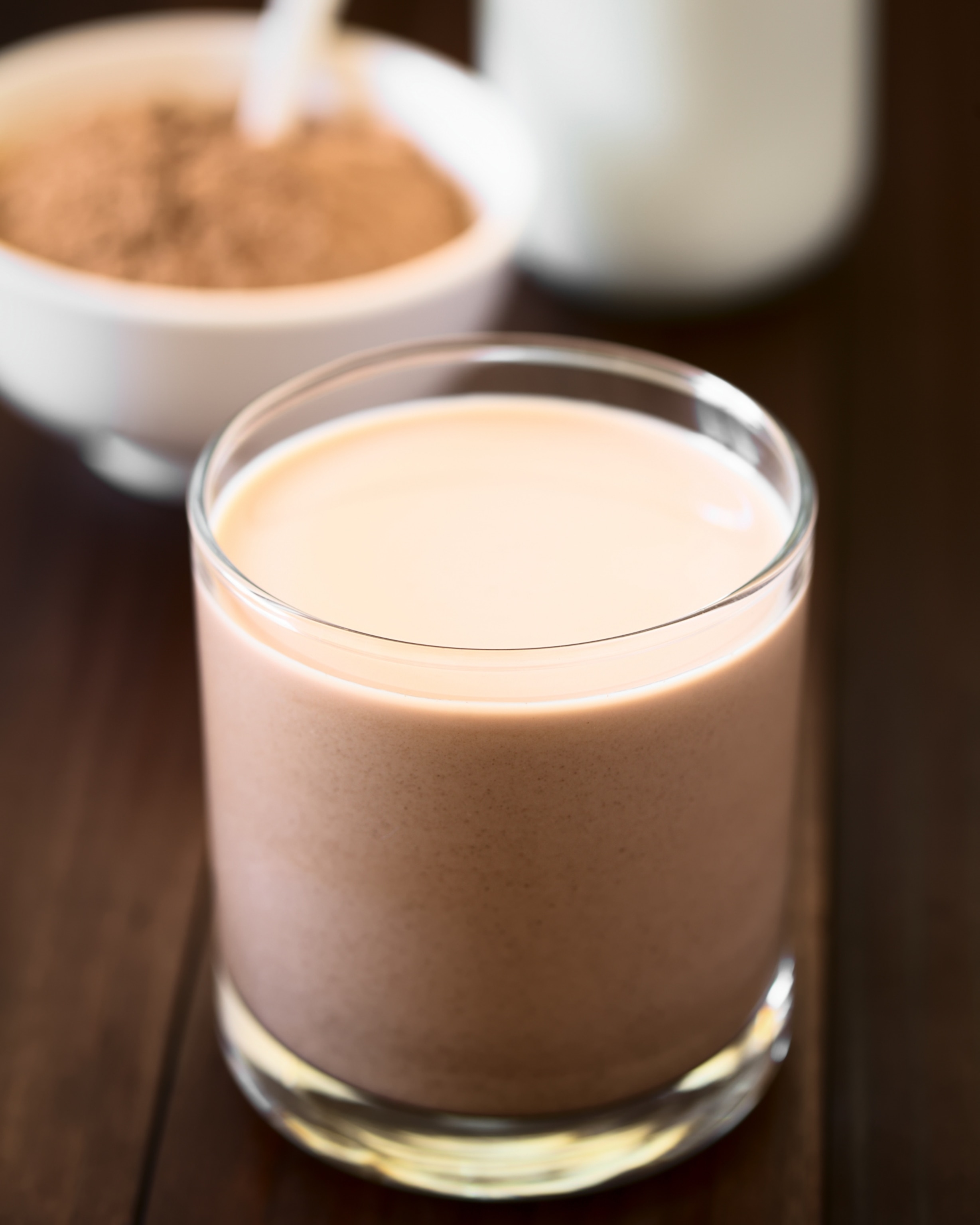When you reach the end of a long run or bike ride, it’s time to refuel your body. And you’ve got a veritable smorgasbord of readily available choices: Protein bars. Electrolyte drinks. Bananas. Pretzels.
And chocolate milk?
Yes: many endurance athletes rely on chocolate milk to help them recover—at a marathon, for example, you’ll often see it as one of the many post-race snacks available to runners. And experts say that there’s science to back that up.
“It’s not so much that it’s better than every other recovery drink. It’s just that every other recovery drink is not better than chocolate milk,” says Todd Miller, professor of exercise and nutrition sciences at George Washington University in Washington, D.C.
The drink may be surprisingly suitable after an endurance workout, but chocolate milk is not so helpful for recovering from shorter workouts like a normal weight training session, for example. Here’s how best to use chocolate milk and why it works.
What does your body need after a long workout?
Endurance workouts—generally defined as two hours or more of vigorous activity—can be tough on the body, draining it of electrolytes, stored carbs, and protein.
(No time for endurance workouts? Just 5 minutes still has a big impact.)
The first thing you might notice as you power through each mile is all the sweat. Your body isn’t just losing water when you sweat; it’s losing electrolytes like potassium and sodium, which maintain the balance of fluids in the body. You’re also losing other essential vitamins and minerals.
Your body also consumes a lot of energy to keep itself going. Carbohydrates are the body’s main fuel source: When you eat a carb, your body breaks it down into glucose and stores some in the liver and muscles in the form of glycogen. Glycogen is the main source of fuel during an endurance exercise, Miller says—and a workout longer than two hours risks depleting these stores completely.
Finally, long duration workouts in general can break down your muscles—about 15 percent of the calories you burn in those workouts can come from muscle, Miller says. To help them repair themselves, you need to supply the muscles with protein.
So how do you replace macronutrients like carbs and protein—the nutrients you use in largest amounts—as well as electrolytes, vitamins, and minerals? “Chocolate milk just happens coincidentally to check all those boxes—and it’s cheap,” Miller says.
What makes chocolate milk good after a workout?
The simplest reason why chocolate milk is good after a workout is because it’s a liquid. Because liquids are easier to digest, they can deliver nutrients to your muscles more quickly—and the ideal window for maximizing your recovery is within 45 minutes to an hour after finishing a workout.
“Chocolate milk is really nutrient-dense,” says Kate Patton, a dietician at the Cleveland Clinic. It contains electrolytes like sodium and potassium—about as much of the latter as a banana—as well as minerals like calcium and phosphorous, which keep your bones strong, and an array of vitamins including vitamins A, D, and B12.
(These foods can help you fight off everyday stress.)
How about carbohydrates and protein? Milk has both—and the sugar in chocolate milk gives it even more carbs. Even though that might not sound like an advantage, the added carbs from sugar is what gives chocolate milk what some consider the ideal ratio of carbs to protein, about 3 or 4 grams of carbs for each gram of protein.
For much of the last decade or so, scientists thought was that this ratio was key to stimulating muscle protein synthesis, the biological process that helps muscles recover, says Amanda McCarthy, program coordinator for the Sports Medicine Center at Children’s Hospital Colorado. Newer research has called that into question, she adds, but nevertheless research shows that higher levels of carbs in chocolate milk do help with recovery.
What about other types of milk?
Regular milk contains all of these nutrients, too. But its only sugar content is derived from lactose—meaning the overall amount of carbs is lower, upsetting the all-important ratio of carbohydrates to protein. But if you add a squirt of chocolate syrup? Boom, you’re back in business.
If you’re more of a strawberry milk drinker, there’s some hope for you, too. Although McCarthy says she’s not aware of any research into its use as a recovery drink, she points out that its nutritional profile is similar to chocolate milk. “I don’t know why strawberry milk wouldn’t provide those same benefits as chocolate milk,” she says.
For those who can’t digest lactose, Miller recommends adding chocolate syrup to lactose-free milk—although Patton points out that the carb-to-protein balance can vary depending on the brand of milk so it’s worth checking the label.
(Is your favorite plant-based milk good for the planet?)
And when it comes to vegan options, soy milk has the closest carb-to-protein ratio to cow’s milk standpoint to dairy milk. But when you look at other milks like oat, rice, and almond, McCarthy says, “the protein content drops really, really low.”
You could still recreate that ratio by adding something else with protein—but the advantage of chocolate milk is that you don’t have to go through all that trouble.
Why pick chocolate milk over other recovery beverages?
In fact, that’s exactly the reason why people turn to chocolate milk for recovery. “It’s easy,” McCarthy says. “It’s one individual item where you can drink it, it tastes delicious for most people, and it’s got extra nutritional value.”
But the real selling point for most people, she says, is that chocolate milk is significantly cheaper than fancy recovery beverages. It’s also easily available in schools—which is why high school cross-country coaches might recommend it over anything else.
So does this mean chocolate milk is healthy?
Not so much. (Sorry.)
Chocolate milk isn’t recommended as an everyday drink for the same reason that it’s ideal for endurance workouts: It has a lot of sugar and calories.
“This is the same with any recovery drink,” Miller says, “Recovery drinks are generally pretty high-calorie because their whole goal is to replace the energy that you burned during the activity.”
(Why simply cutting carbs and fat isn't a guarantee for losing weight.)
It’s also not the ideal recovery beverage for a regular workout because you need different nutrients. Electrolytes can help after a short run and protein is great after weight lifting—but carbs are less necessary since you’re unlikely to be depleting your glycogen stores.
“The casual exerciser probably won’t really ever need a recovery drink,” Miller says. “But somebody who is an endurance athlete, that’s where you really see muscle protein being broken down and used for energy. You do not want that happening.”









